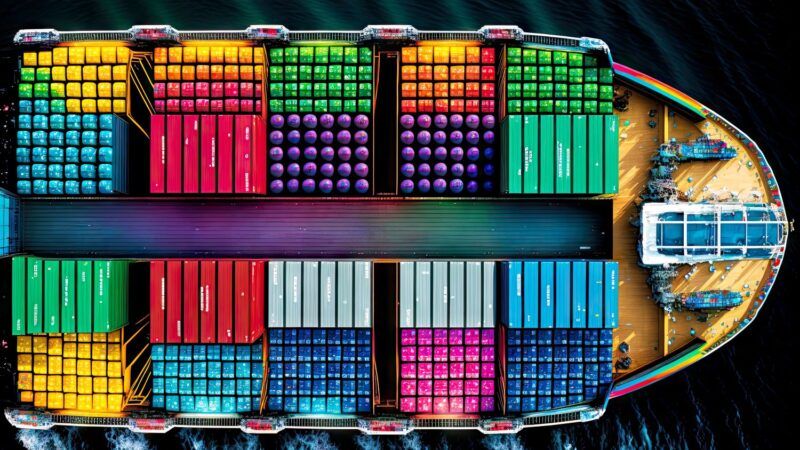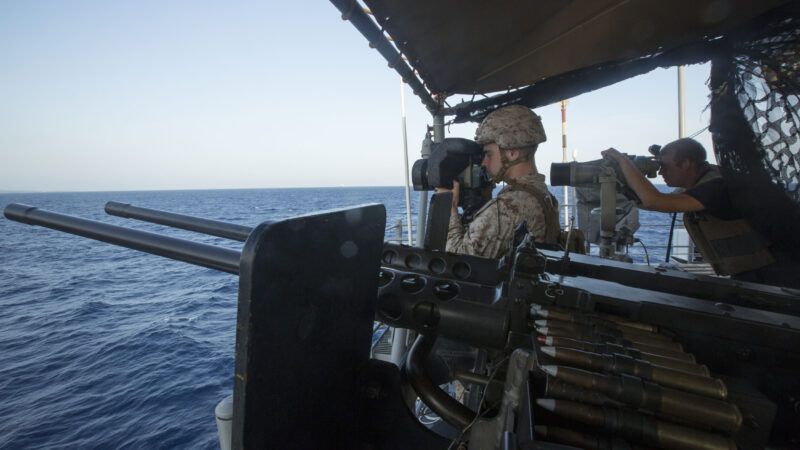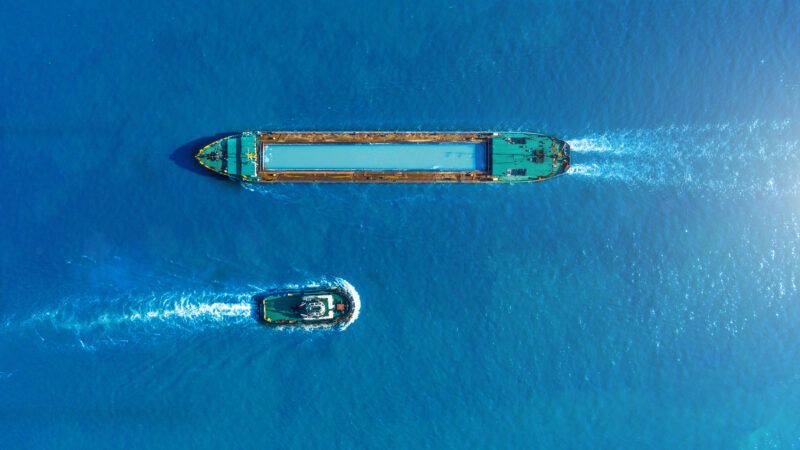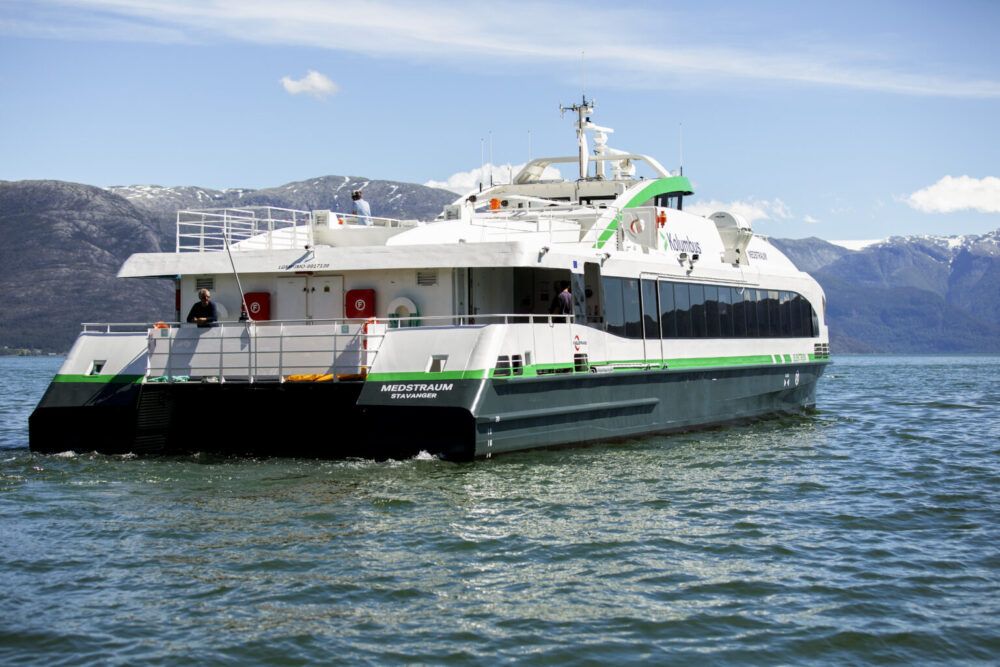 MS Medstraum, the world's first all-electric, zero-emission fast ferry classified as a high-speed vessel (Maritime CleanTech)
MS Medstraum, the world's first all-electric, zero-emission fast ferry classified as a high-speed vessel (Maritime CleanTech)
The sustainable future of ferries: decarbonisation and electrification
Although today's ferries are already a more sustainable alternative to other modes of transport, especially when competing with road transport, the current trend is to make them a zero-emission, effective and innovative mode through electrification, helping to reduce the carbon footprint of transport and protecting the environment.

Carlos Martín is the Manager of the Ports and Maritime Transport Consultancy Area at IDOM.
 MS Medstraum, the world's first all-electric, zero-emission fast ferry classified as a high-speed vessel (Maritime CleanTech)
MS Medstraum, the world's first all-electric, zero-emission fast ferry classified as a high-speed vessel (Maritime CleanTech)
Ferries are an attractive choice for passenger transport both in urban environments and connecting between regions. They offer advantages such as flexibility in terms of scheduling and routing, a more relaxing and comfortable on-board experience, and no need for invasive infrastructure between destinations.
In recent years, many all-electric ferry services have emerged, especially in Scandinavian countries and other parts of Europe and North America. Electric ferries not only reduce greenhouse gas emissions, but also improve overall air quality and reduce noise, the latter being particularly relevant in residential areas close to bodies of water.
Norway, Canada, Portugal or New Zealand, pioneer examples
Thus, there are several initiatives for passenger transport networks using electric ferries, with Norway as the main standard-bearer, but also some very interesting ones implemented or under construction for cities in the Netherlands, Germany, Denmark, Portugal, Canada and New Zealand.
In general, these are medium-capacity vessels (up to 250 passengers), with lengths of up to 40 metres and maximum cruising speeds of 20 knots. However, there are more ambitious and interesting initiatives which are not yet operational, but which aim to reach cruising speeds of over 28 knots.
Many other cities are aware of the importance of decarbonising the transport sector and many regions are already following the example of northern European economies. This is the case, for example, of the city of Istanbul, with studies in this field and where passenger transport by water is very relevant, or the plans of several Latin American economies to progressively replace the fleet operating on their waterways with electric or carbon neutral vessels.
The most ambitious example is the futuristic development of the NEOM region in Saudi Arabia, where a fully sustainable, people-centred waterborne public transport network is being designed, offering high connectivity and comfort on board a zero-emission fleet with the aim of connecting 650 km of coastline and multiple developments on several islands in its archipelago.
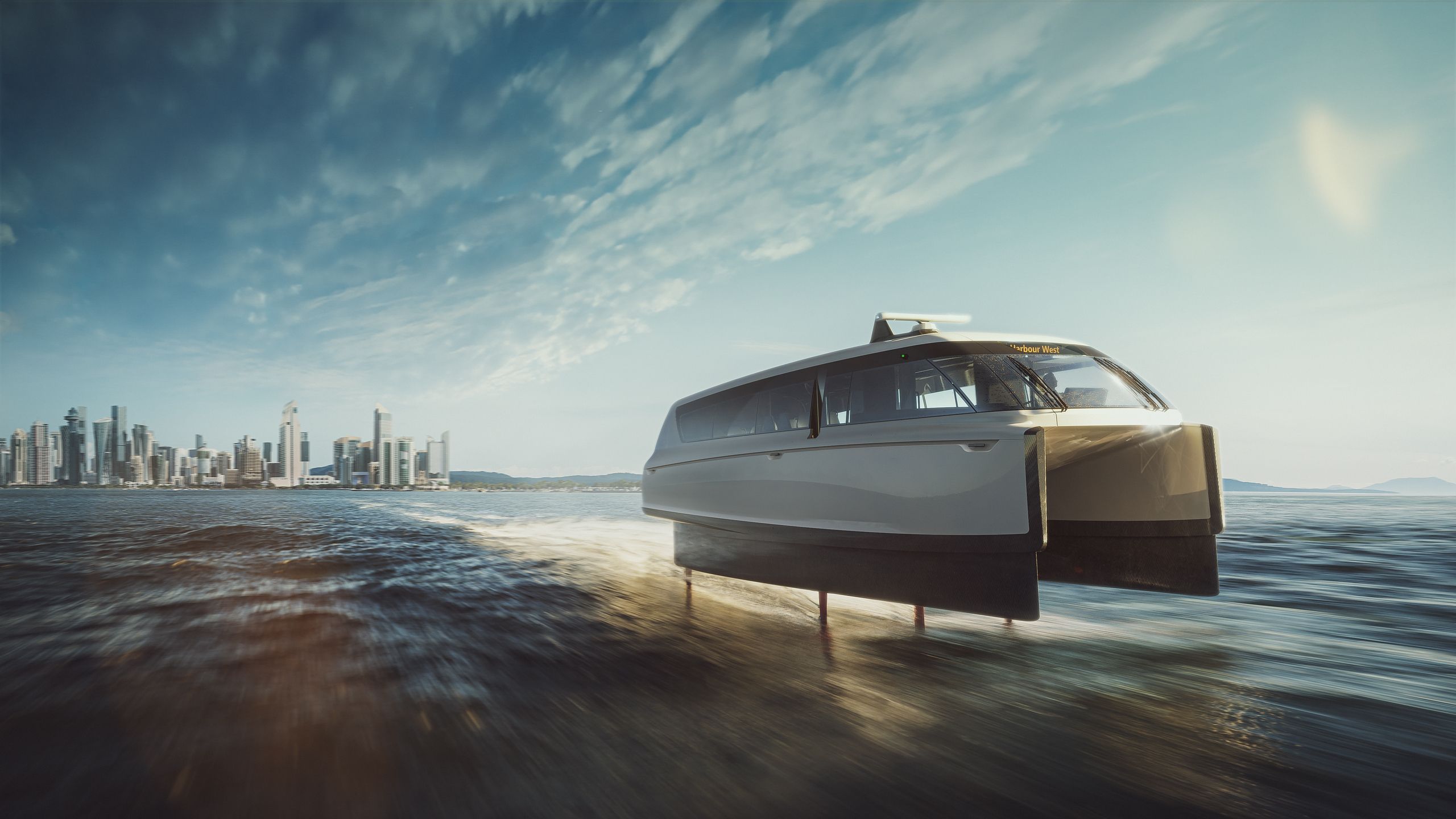
Propulsion systems: batteries and green methanol, the most developed
The propulsion systems for passenger vessels with the greatest current applicability are lithium-ion and high-energy batteries with higher energy density. They are safe, reliable, emission-free, and are gaining market share, although they face several challenges due to their size, weight and cost. It should be noted that for transport to be categorised as purely green, the electricity supply for charging must come from renewable sources.
On the other hand, green methanol is another energy source that is expected to be available for commercial use, although in this case it is a carbon-neutral fuel and its toxicity to humans poses a challenge for its application in passenger transport. For the same reason, but to a much higher degree, green ammonia is ruled out for passenger vessels.
To a lesser degree of development are propulsion systems based on green hydrogen fuel cells, with the first such vessels expected to come into operation during this year 2023 with developments in the United States and Norway, and later on, the development of green hydrogen-powered engines is also expected.
In both cases, the biggest challenge remains the inherent characteristics of hydrogen, which requires high pressure and very low temperature for storage, and is a highly flammable gas with low energy density.
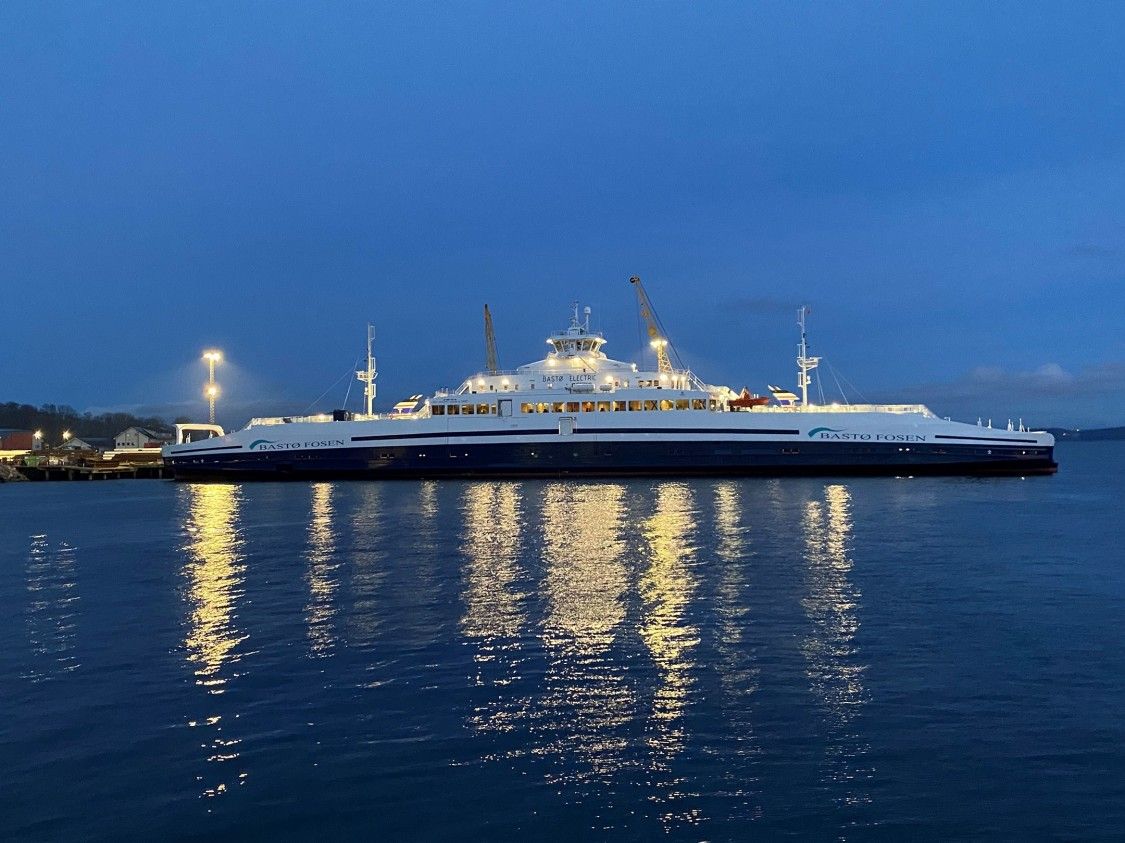
Speed, autonomy and capacity, the three critical factors
The viability of a transport service based on an all-electric or zero-emission fleet is strongly conditioned by three critical factors: cruising speed, maximum available range and passenger carrying capacity.
Generally speaking, longer sailing routes are more difficult to make feasible with an electric vessel than those with more frequent port calls. Also, higher speed demands are difficult to meet, as energy consumption increases roughly with the cube of the speed.
Carrying capacity is limited by the size required to accommodate batteries, as well as by weight, capacity and cost constraints. Moreover, these three factors are interrelated; if higher range is required, high cruising speeds cannot be maintained, and if higher carrying capacity is needed, range must be partially forgone.
The process of designing and allocating the appropriate fleet for each route is therefore iterative and ultimately determines future service conditions.
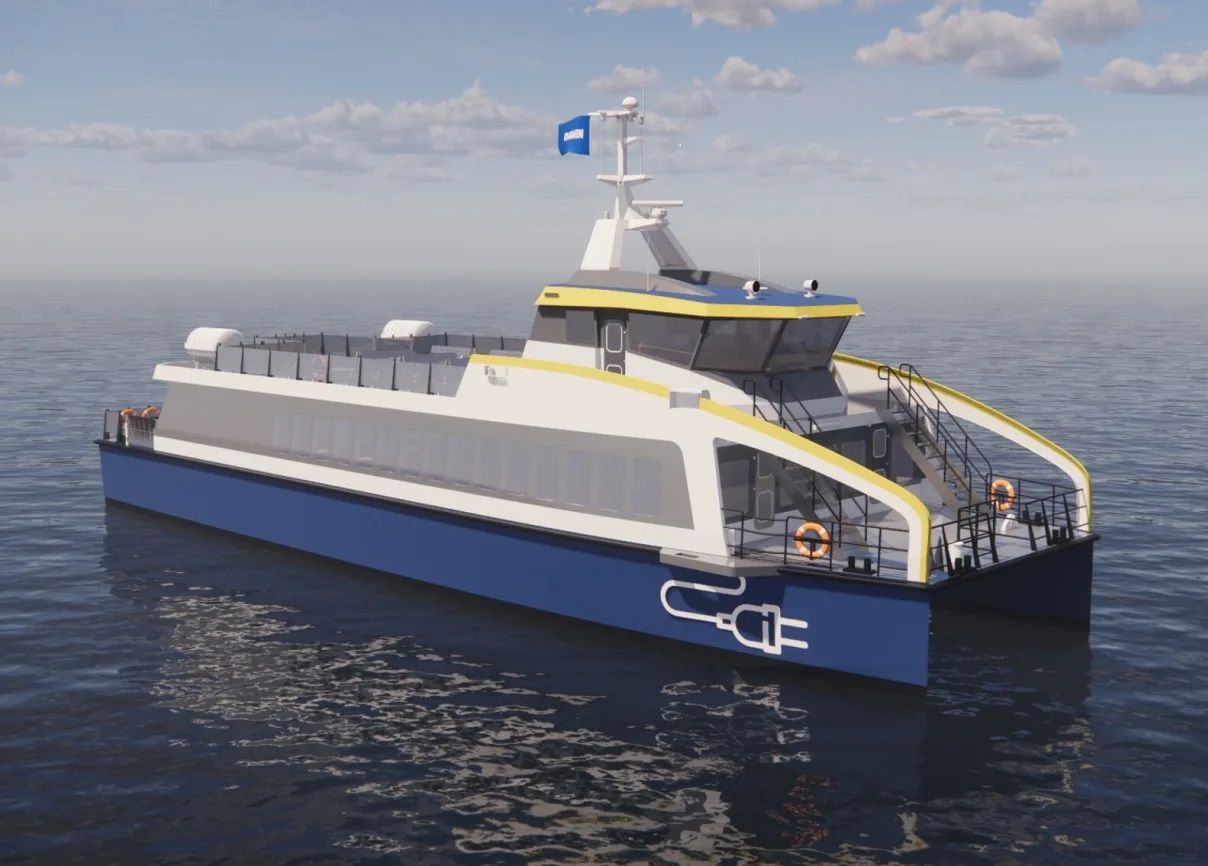
The technical and operational feasibility of an in-water electricity transport service depends on several interrelated factors
Infrastructure and charging times
Clearly, selecting the right vessel for a maritime operation goes beyond the number of seats and performance in terms of speed and range. In this field, the availability of charging infrastructure to ensure that the operation is safe, efficient and sustainable is a particularly influential factor in selecting the right vessel.
If charging facilities are available on the route, then an all-electric engine can be chosen. Otherwise, some form of hybridisation may be necessary to ensure that the vessel has sufficient power to complete its cycle.
In either case, the times required to perform electric charging determine the schedule allocation and may imply the need for a greater number of vessels, when required to maintain a set average frequency of passage.
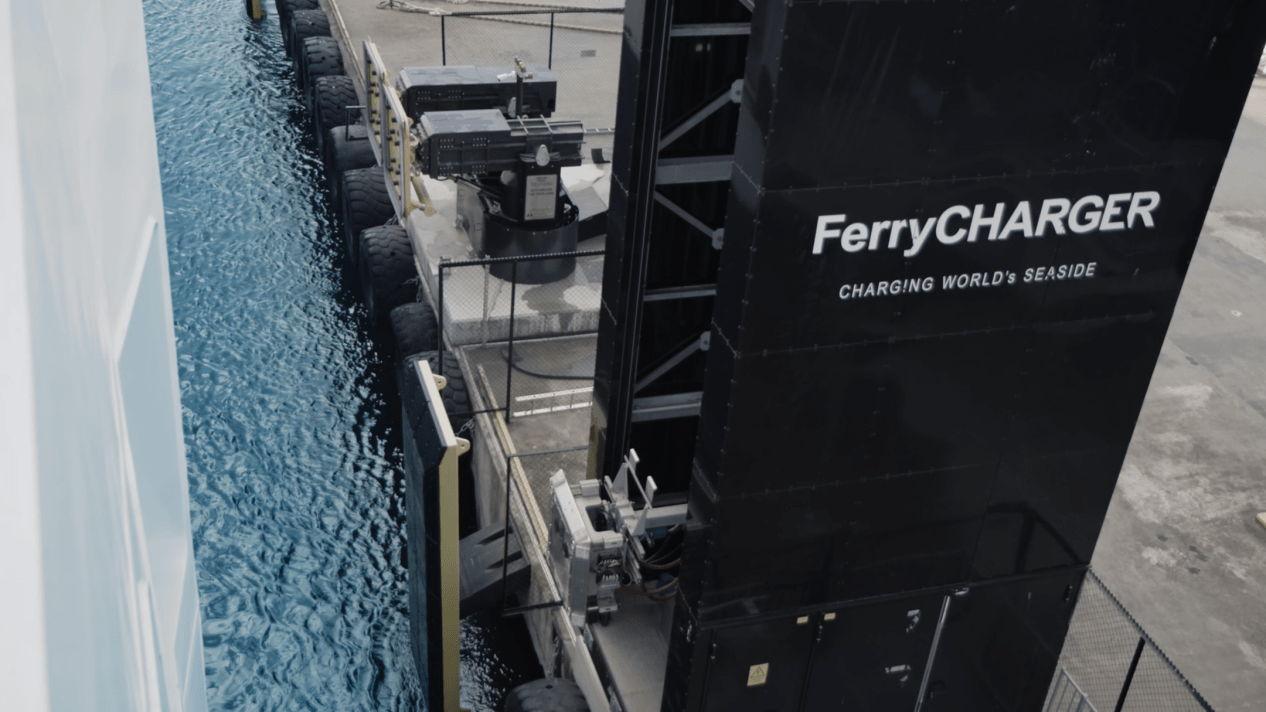
Hybrid propulsion systems, the first step towards hybridisation
Solutions such as the installation of energy accumulators in the terminal that are charged during the day and are able to transfer the necessary power to the ferry at the time when passengers embark and disembark may be of interest in certain cases.
In summary, the technical and operational feasibility of an electric transport service on water depends on several interrelated factors, and the choice of the right vessel for a specific route is a complex process that requires a careful assessment of multiple factors.
In parallel, the feasibility of the financial plan of the transport model must be assessed. Deploying a system based on electric or zero-emission vessels implies a higher investment due to the purchase price of batteries and the installation of high-powered electric charging systems.
More vessels may also be required due to the downtime associated with recharging needs. Conversely, both operating costs, due to the elimination of fuel supply, and maintenance costs, due to the type of engine and its power supply, may be lower, so financing formulas should be sought that assess the environmental improvements and ensure the overall economic health of the transport system.
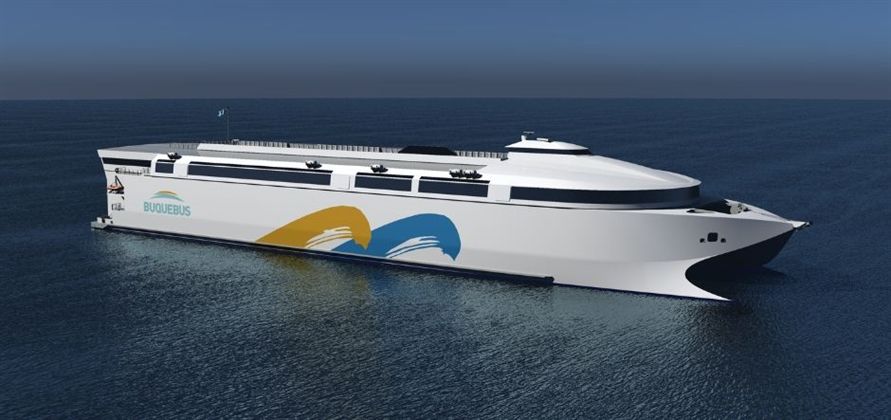
On the other hand, it is important to assess the time horizon for strategic fleet acquisition or renewal planning, as battery development is expected to continue to accelerate.
In the future, lighter and higher capacity batteries are expected, as well as modular high power charging systems or solutions with integrated batteries or central stations with integrated electronics and charging satellites at points close to their use.
In terms of propulsion systems, hybrid solutions are projected to adopt increasingly sustainable fuels, from electric-diesel combinations to the use of methanol or green hydrogen.
Automation and ground effect navigation
In the current environment of technological evolution, it is essential to consider what-if scenarios and re-evaluate the assumed decision-making paradigm. In the maritime domain, two trends are emerging that could significantly alter the status quo.
On the one hand, there is a growing interest in automation in shipping, which is closely linked to the development of electric or zero emission fleets. This way, it is expected that in the not too distant future, the number of crew on board will be reduced and there will be a move towards remote-controlled or even fully autonomous systems on short, repetitive routes and in controlled environments.
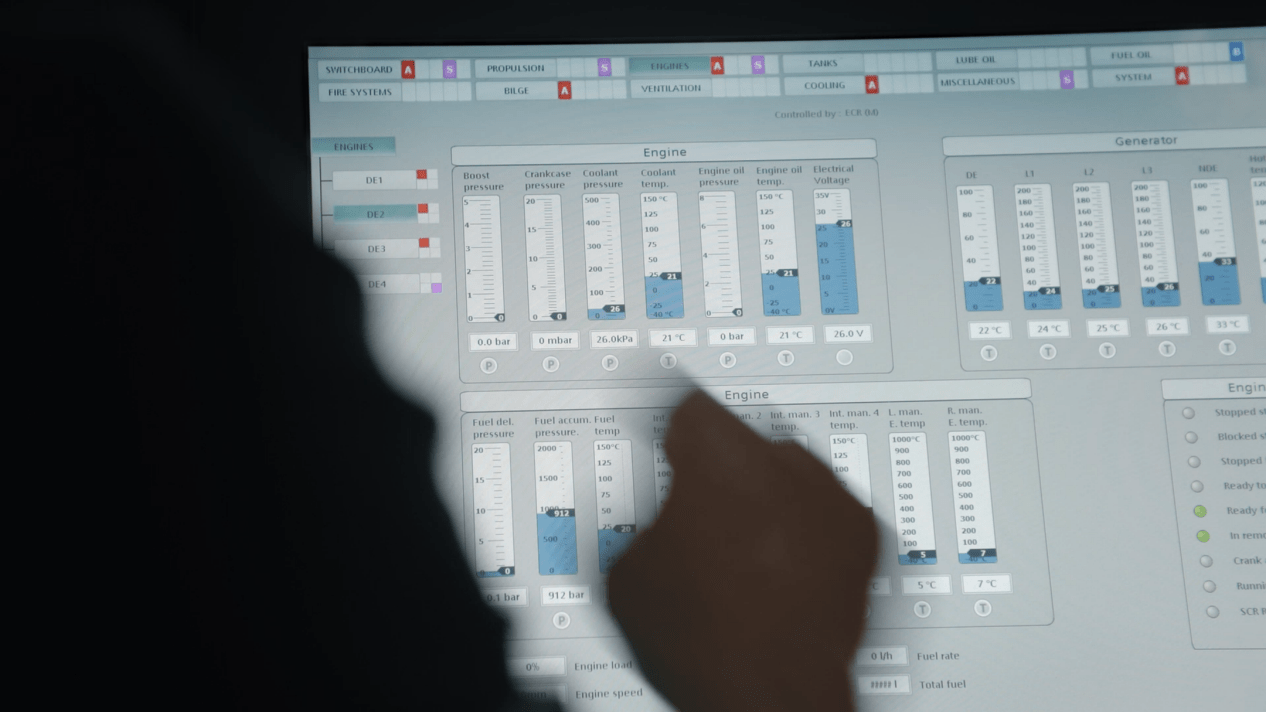
On the other hand, ground effect navigation vehicle technologies are re-emerging, which are similar to aeroplanes and over-water travel by generating an aerodynamic shield by means of the air cushion.
These aircrafts, which fall under the regulatory umbrella of the International Maritime Organisation, are much faster than conventional vessels and can travel distances of up to 350 km thanks to lower energy consumption due to the elimination of water resistance.
In short, electric ferries are a viable, sustainable and effective solution to reduce greenhouse gas emissions, improve air quality in areas close to ports and tackle negative externalities associated with waterborne transport.
Battery capacity and electric infrastructure are the main challenges in their implementation, but these are expected to be overcome as the appetite for such vessels continues to strengthen in different regions, and ferry manufacturers embrace this technological shift to bring costs down.
In addition, more and more cities are following the lead of pioneering regions and are planning to modernise and renew their waterborne transport systems towards sustainable solutions, resulting in latent opportunities for the application of ferry technologies currently under development.
To find out more
Incat Tasmania builds world’s largest zero-emission ferry for Buquebus
World’s first electric fast ferry is here
Electric propulsion lets Norway ferry passengers hear the sounds of the fjords
You’re About to See Electric Ferries Everywhere—Here’s What to Know
HYDROLIFT SMART CITY FERRIES (HYKE) NAMED TO TIME’S “THE BEST INVENTIONS OF 2022”


